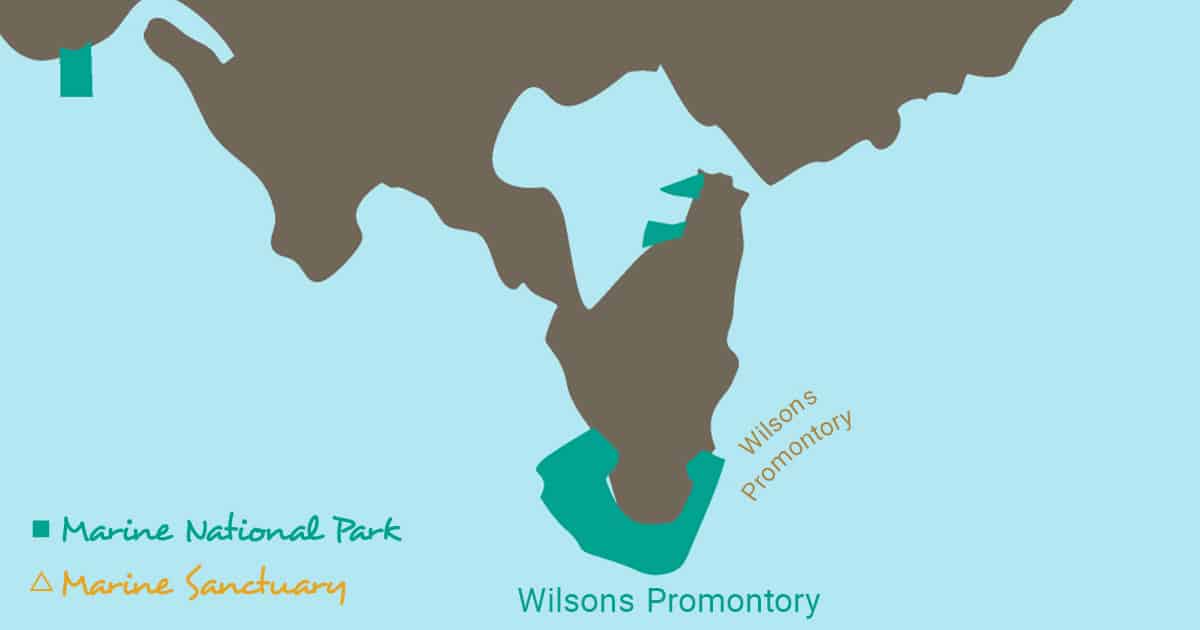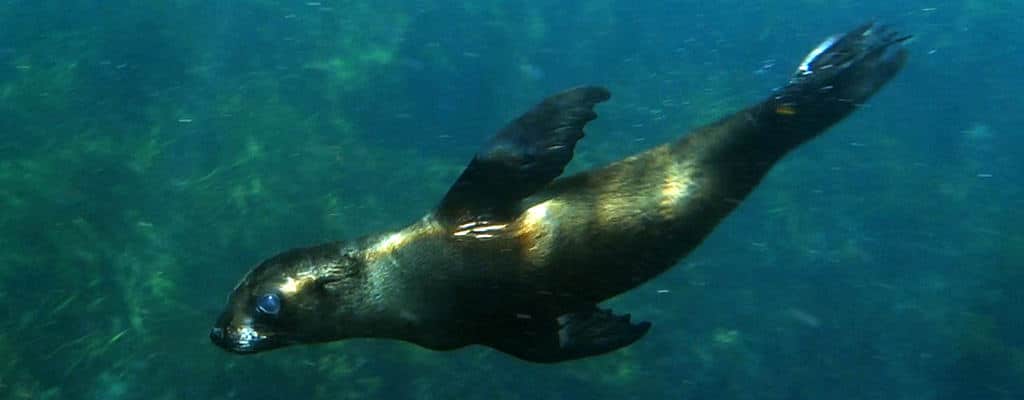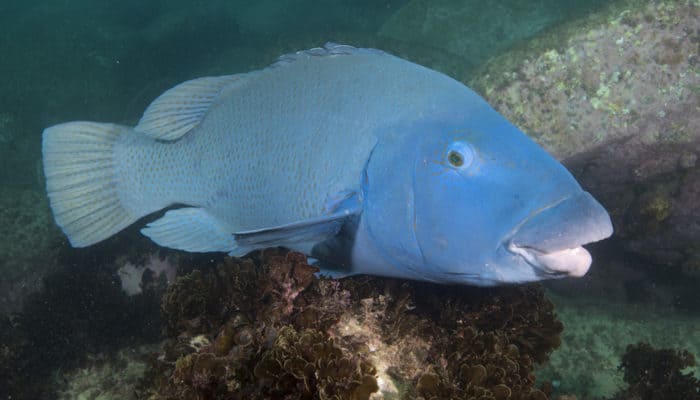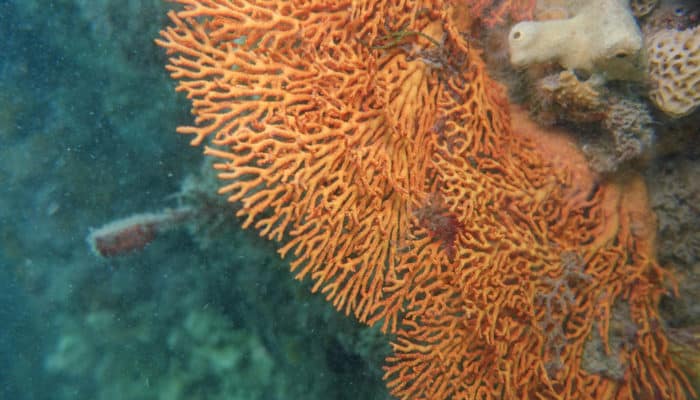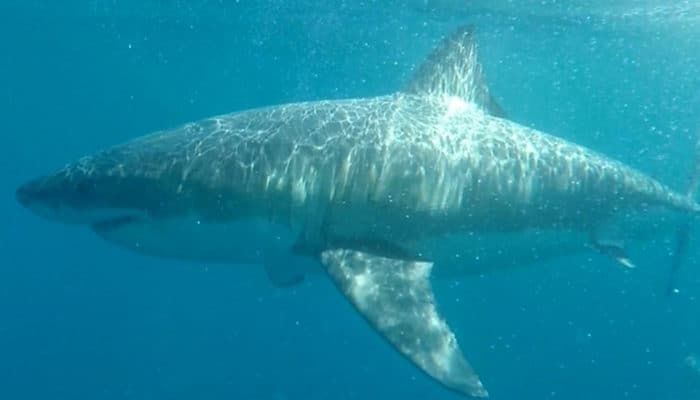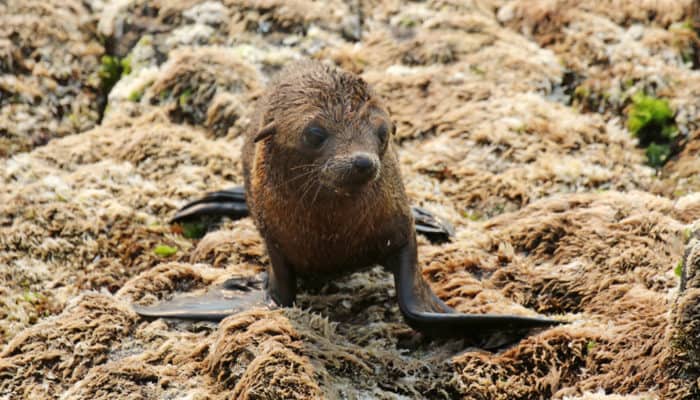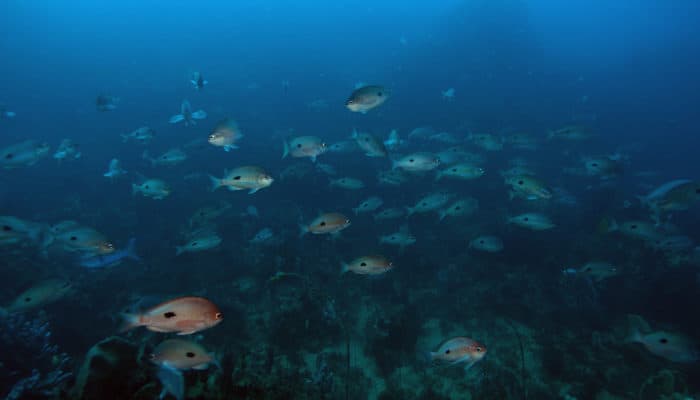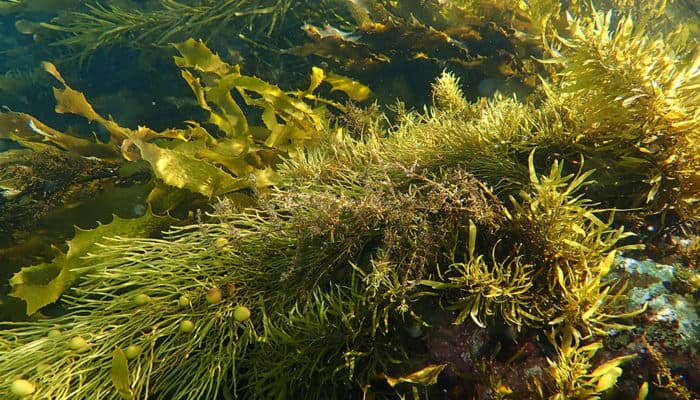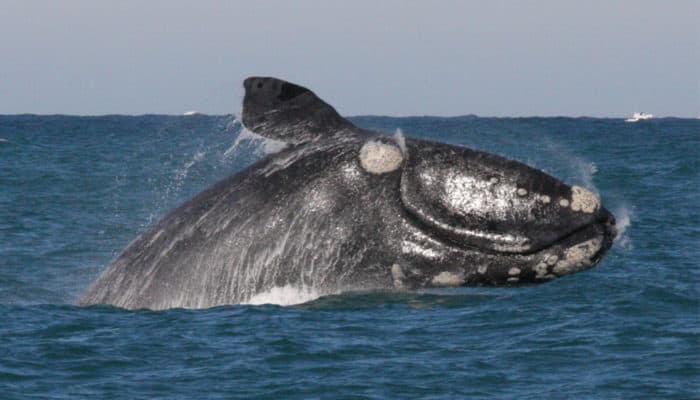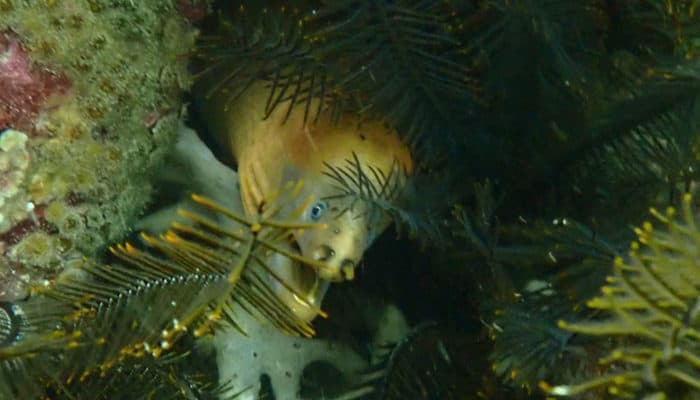Wilsons Promontory
The southernmost part of the Australian mainland, Wilsons Promontory (‘the Prom’) is a place of rugged hills, sloping headlands, sandy coves, and picturesque offshore islands. The Prom also has magnificent underwater areas – its waters are clear, deep, and rich in life.
The Prom is the exposed link in a chain of underwater granite mountains that continue as islands across Bass Strait and onto eastern Tasmania. Huge granite boulders or pinnacles rise from the white or yellow sand in coastal waters, topped by multi-coloured seaweed. Fish move in and around these forests.
In deeper areas, under ledges or in caves, are fascinating sponge ‘gardens’, dominated by huge sponges, sea-fans, bright orange or blue or grey sea-lace colonies, coloured sea-tulips and beds of long slender sea-whips. Fish include pink barber perch and butterfly perch (Caesioperca rasor). Boarfish forage amongst the deep crevices. Giant octopuses venture out of the rocks at night. Rays and harmless sharks occupy the sandy areas.
The offshore islands support colonies of Australian Fur Seals, and seals are common companions to divers underwater. Seals have pups in November and December, and at this time Great White Sharks frequent adjacent waters to the pupping areas.
Wilsons Promontory marks the boundary for many animals that prefer the warm waters of eastern Victoria. Currents that flow from NSW and Queensland support populations of warm-water fish like Moray Eels and Blue Gropers.
The ranges of the two species of blue groper in Victoria are separated by the waters around the Prom (east and west). Blue gropers are not blue all their life. As small juveniles, they are green. Females are brown, and it is only the large males that are blue. Large, old male blue gropers can grow up to a metre long and live to over 35 years. Divers using spear guns can easily overfish blue gropers, and their numbers have been greatly reduced on many coastal reefs. They have been fully protected in Victoria since 2011.
Other fish common to these waters include the plucky and social butterfly perch (Caesioperca lepidoptera), which form large, alluring schools over deepwater reefs and ledges. They are opportunistic feeders that take advantage of eddies that swirl the microscopic animal life, the zooplankton, into concentrations. The areas of reef where this occur are usually covered with colourful sponges and gorgonian corals, and with the combination of pink fish, it makes a visual spectacle when diving.
Gorgonian coral Melithaea zimmeri grows to nearly a metre in height in some areas and orange, red or yellow in colour. Gorgonians are a colony of thousands of tentacle-fringed polyps which retract when not trying to screen the water for microscopic animals. Gorgonian corals grow on an angle to the prevailing surge and currents, allowing them to feed almost continuously.
The brown seaweed known collectively as Cystophora are familiar to divers. With over 23 varieties in southern Australia, they are sometimes considered as the marine equivalents of the eucalypts. It is not uncommon to find several species of Cystophora growing together on the sheltered reefs of the Prom.
Whales and dolphins can be seen around the Prom. Southern Right Whales are frequent winter visitors, as are Orcas and Humpback Whales. Pilot and False Killer whales are also known. Two dolphin species, bottlenose and common, occur throughout Victorian waters. Fur-seals, sea-lions and true seals are often seen swimming in open waters taking advantage of small fish, squid and octopus.
Large, powerful, and superbly adapted to life in the sea, the great white shark (Carcharodon carcharias) occurs worldwide, including off Victoria. Great white sharks have a fearsome reputation, but attacks on humans are infrequent. We are more of a danger to sharks than they are to us. Worldwide there are about 10 human deaths each year from attacks by all kinds of sharks. This is compared to 70,000,000 sharks killed for food, sport and ornaments, or as by-kill of commercial fisheries. The great white shark is now protected in all Australian State and Commonwealth waters.
Marine Protected Areas
- Wilsons Promontory Marine National Park
- Wilsons Promontory Marine Park
